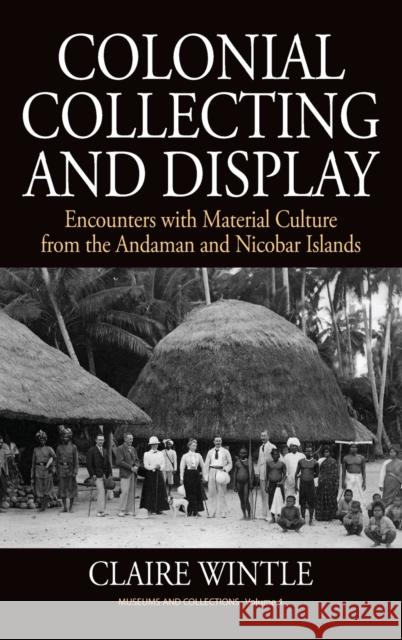Colonial Collecting and Display: Encounters with Material Culture from the Andaman and Nicobar Islands » książka
Colonial Collecting and Display: Encounters with Material Culture from the Andaman and Nicobar Islands
ISBN-13: 9780857459411 / Angielski / Twarda / 2013 / 264 str.
Colonial Collecting and Display: Encounters with Material Culture from the Andaman and Nicobar Islands
ISBN-13: 9780857459411 / Angielski / Twarda / 2013 / 264 str.
(netto: 482,14 VAT: 5%)
Najniższa cena z 30 dni: 498,70
ok. 30 dni roboczych
Bez gwarancji dostawy przed świętami
Darmowa dostawa!
In the late-nineteenth century, British travelers to the Andaman and Nicobar Islands compiled wide-ranging collections of material culture for scientific instruction and personal satisfaction. Colonial Collecting and Display follows the compelling history of a particular set of such objects, tracing their physical and conceptual transformation from objects of indigenous use to accessioned objects in a museum collection in the south of England. This first study dedicated to the historical collecting and display of the Islands' material cultures develops a new analysis of colonial discourse, using a material culture-led approach to reconceptualize imperial relationships between Andamanese, Nicobarese, and British communities, both in the Bay of Bengal and on British soil. It critiques established conceptions of the act of collecting, arguing for recognition of how indigenous makers and consumers impacted upon "British" collection practices, and querying the notion of a homogenous British approach to material culture from the Andaman and Nicobar Islands.
In the late-nineteenth century, British travelers to the Andaman and Nicobar Islands compiled wide-ranging collections of material culture for scientific instruction and personal satisfaction. Colonial Collecting and Display follows the compelling history of a particular set of such objects, tracing their physical and conceptual transformation from objects of indigenous use to accessioned objects in a museum collection in the south of England. This first study dedicated to the historical collecting and display of the Islands' material cultures develops a new analysis of colonial discourse, using a material culture-led approach to reconceptualize imperial relationships between Andamanese, Nicobarese, and British communities, both in the Bay of Bengal and on British soil. It critiques established conceptions of the act of collecting, arguing for recognition of how indigenous makers and consumers impacted upon "British" collection practices, and querying the notion of a homogenous British approach to material culture from the Andaman and Nicobar Islands.











